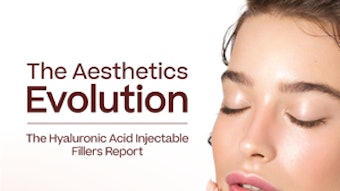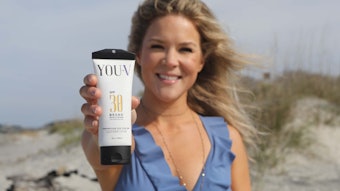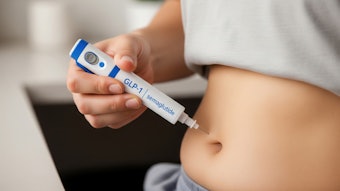
 Eastman's Esmeri CC1N10 is a microplastic-free cellulose ester micropowder designed for use in lipsticks, foundations and pressed powders. Notably, it offers excellent compressibility, making it an appealing alternative for brands looking to replace synthetic microplastics in their formulations.Sam Lion at Pexels
Eastman's Esmeri CC1N10 is a microplastic-free cellulose ester micropowder designed for use in lipsticks, foundations and pressed powders. Notably, it offers excellent compressibility, making it an appealing alternative for brands looking to replace synthetic microplastics in their formulations.Sam Lion at Pexels
Soft-Focus Microplastic Alternatives for Cosmetics
 Microplastic alternatives offer a range of effects, including blurring, across an array of cosmetics.zinkevych at Adobe Stock
Microplastic alternatives offer a range of effects, including blurring, across an array of cosmetics.zinkevych at Adobe Stock
- KSG-16-SF (INCI: Dimethicone (and) Dimethicone/Vinyl Dimethicone Crosspolymer): Provides maximum soft-focus and line-blurring effects for hiding wrinkles, while delivering a silky skin feel and serving as a thickening agent. Ideal for primers and compatible with silicones.
- KM-116 (INCI: Dimethicone (and) Dimethicone/Vinyl Dimethicone Crosspolymer): A concentrated silicone elastomer gel emulsion that imparts a soft, silky, and velvety feel to the skin. Reduces stickiness and works well in water-based or O/W formulations.
- KSG-19 (INCI: Dimethicone & Dimethicone Vinyl Dimethicone Crosspolymer): Lightweight elastomer gel offering a silky powdery sensation, matte effect, and thickening properties. Suitable for achieving unique textures without heaviness.
- KSG-45 (INCI: Coco-Caprylate/Caprate (&) Vinyl Dimethicone/Lauryl Dimethicone Crosspolymer): An alkyl-modified silicone elastomer gel swollen with plant-based oil, enhancing powdery feel, thickening, and mattifying effects. Compatible with silicones, organic oils, and esters, making it ideal for highly organic systems.
These ingredients are designed to replace traditional microplastics, while maintaining aesthetic, sensory and functional qualities in cosmetic formulations.
According to SESA’s cosmetics application laboratory team leader, Janine Cherette, “All of the materials demonstrate high optical blurring with nice sensorial texture and oil thickening benefits. Used in a wide range of cosmetics formulations, they continue our effort to provide silicone options addressing the consumers needs for aesthetically pleasing performance based products.”
SESA’s North America marketing manager, Eric Bishop, added, “The range of soft-focus formulations mixture possibilities are vast for formulators to choose from to achieve their desired skin-friendly results.”
A Sustainable Seaweed-Based Alternative to Synthetics
California-based biotech company Macro Oceans launched Big Kelp Flex, its new seaweed cellulose ingredient. This natural ingredient reportedly provides a level of performance equal to synthetics but eliminates microplastics from formulas. As the dialogue around sustainability endures and companies scrounge for microplastic replacements, clean, zero-waste innovation in the industry are exactly what the market is demanding.
According to the company, Big Kelp Flex salves several sore spots in the industry; one being that it’s able to suspend high-density particles like zinc or titanium in mineral sunscreens. Previously, to ensure a product disperses evenly for effective sun protection, companies have turned to microplastics or natural ingredients like gum and bentonites, which can clog nozzles and contribute to white casting.
Big Kelp Flex harnesses the regenerative properties of seaweed instead to create a superabsorbent ingredient that efficiently suspends particles in mineral sunscreens.
Another need Big Kelp Flex meets is restoring luxurious, silky textures often lost in natural products.
“Seaweed cellulose fibers are naturally purer, longer, thinner and more flexible than other plant-based fibers such as wood”, explains Colin Hepburn, chief technology officer. “This gives them superabsorbent properties and the ability to create unique visco-gel structures.”
“We’re committed to sourcing ingredients that are as thoughtful in origin as they are effective in performance,” says Matt Roomet, founder and CEO of Project Reef, on why he partnered with Macro Oceans.
“Big Kelp Hydration offers incredible skin benefits, but it also helps planet regeneration by sequestering carbon from our atmosphere. The partnership between Project Reef and Macro Oceans is about shared purpose and environmental impact.”
A New Cellulose Ester Micropowder to Replace Synthetic Microplastics
Eastman showcased Esmeri CC1N10, a biodegradable, high-performance ingredient for color cosmetics, at NYSCC's Suppliers’ Day 2025. This microplastic-free cellulose ester micropowder is designed for use in lipsticks, foundations and pressed powders. Notably, it offers excellent compressibility, making it an appealing alternative for brands looking to replace synthetic microplastics in their formulations.
Esmeri CC1N10 (INCI: Cellulose Acetate Butyrate) is derived from sustainably sourced wood pulp and is non-nano in scale, aligning with current environmental and safety standards, including evolving EU regulatory requirements.
The ingredient offers functional benefits such as: soft-focus optical properties, uniform pigment dispersion and good coverage, long wear, good color payoff and a natural matte finish, contributing to both sensory quality and visual performance. According to the company, by providing an alternative to traditional synthetic powders, Esmeri CC1N10 supports the development of environmentally responsible formulations.
The company notes that Esmeri CC1N10 was developed to fulfill "satisfaction gaps" among consumers. In a survey of some 4,000 women, ages 16-70 in Brazil, France, Germany, Italy, the United Kingdom and the United States, four top global beauty consumer concerns were identified:
- Sticky and clumpy mascara (51%)
- Liquid foundation offering poor coverage (39%)
- Eye shadow that wears off (38%) and
- Lipstick that wears off (37%).
Esmeri CC1N10 offers a freshwater biodegradable solution to several of these, with a naturality index (ISO 16128) of 0.62 (naturally derived).













